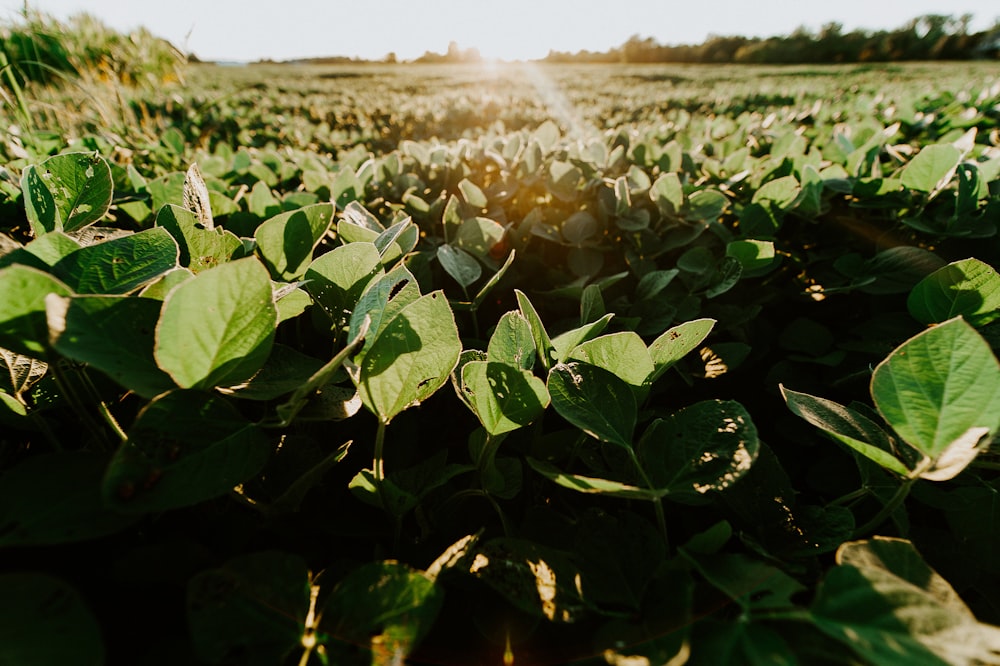Soybeans: Tighter U.S. Plantings, La Niña Effect Point To Higher Prices
Photo by Meredith Petrick on Unsplash
Soybean futures were on track Friday to settle at their highest in three weeks and traded with double-digit gains of as much as 14 ½ cents on Monday, April 3, after the U.S. Department of Agriculture’s Prospective Plantings report featured lower-than-expected planted acres at 87.45 million acres in 2022 and showed 2023 soybean intended plantings little changed from 2022, which means the estimate remains below estimates. The report showed that intended plantings at 87.505 million acres this year would not make up for last year’s shortfall (USDA's March 1 Grain Stocks and Prospective Planting reports, released on Friday, March 31).
Friday’s reports showed 1.685 bbu of soybeans for March 1st, some 246.4 mbu (million bushels) less than last year with a 1.336 bbu Q2 demand. The quarterly NASS, the National Agricultural Statistics Service, update unveiled 749.5 mbu (44.5%) of that available to ship. NASS Prospective Plantings showed farmers intend to plant 87.505 million acres of soybeans in the next, 23/24 season, finally above the 87.45 planted for old crop. The USDA also reported on March 1 soy stocks were down 13% from a year ago. As a result, the most-active May soybean contract, SK23, rose 33 cents, or 2.2%, to $15.07 ½ a bushel, marking the highest for a most-active contract since March 10.
Weekly U.S. soybean exports were reported down from 32.8 mbu last week and from 27.28 mbu during the same week last year to 18.337 mbu during the week that ended March 30. The accumulated soybean shipments were 1.67 billion bushels MYTD through March 30, 2.8% ahead of last year’s pace.
The South American countries, which account for about 55% of the world's soybean supply, are expected to have a mixed crop this harvest. Brazil is on track to break record soybean production, while Argentina is on track for its worst harvest in more than two decades. The difference in yield is caused by the La Niña phenomenon. South American soybean production is expected to continue to outperform last year, but at a slower pace than previously expected. The impact of higher soybean production in South America, combined with the possibility of a larger U.S. soybean crop in the fall, could push prices lower – a trend already seen in commodity markets in 2023 and likely to intensify in the coming months.
Forecasts for Brazil, Argentina, Paraguay, and Uruguay total 6,887 million bushels in 2022-2023, an increase of 416 million bushels (~6%) from the previous crop. South American soybean harvests would have been higher without the strong La Niña impact. A La Niña event favors more rainfall in northern Brazil and less rainfall in the far south of Brazil, Argentina, and Uruguay. Less rainfall this year has led to drought in Brazil, Argentina, and the southernmost tip of Uruguay. Conversely, soybean production in Uruguay is expected to be just a third of last year’s production because of the devastating effects of the extreme drought. According to data from the Uruguayan Ministry of Livestock, Agriculture, and Fisheries (MGAP), production is forecast to be 37 million bushels, down 63% from the 2021/22 crop season. Soybeans are the second most important product exported by Uruguay in terms of revenue.
Summary and forecast:
Reports on grain stocks and planting expectations re-emphasized the trend toward tighter U.S. and South American soybean supplies. With ending stocks already low, the extra spending shown in the report could lead to tighter holdings. The fact that soybean acreage has not grown as expected makes U.S. summer weather all the more important. True, Brazil's record crop is nearing completion, but the Buenos Aires stock exchange has set Argentina's soybean harvest at just 25 million tons (918 trillion), down from an earlier season forecast of 23 million tons (845 trillion) decline.
More By This Author:
Low Wheat Prices Can’t Endure For Much Longer
Orange Juice Concentrate: Potential To Double The Price Until 2025
Cocoa: Facing A Combination Of Bullish Factors




